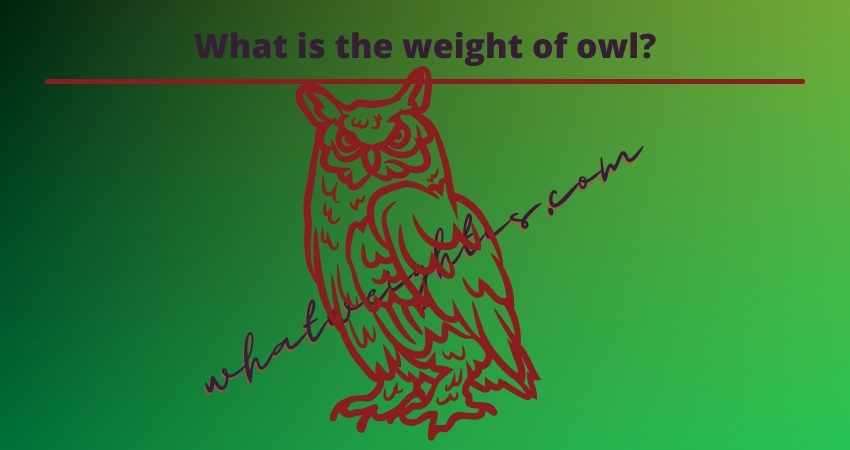One often imagines owls smoothly flying through the night without a sound. The precise navigation and unique vocalizations of owls have fascinated humans for years. These organisms have more than apparent traits. Owl weight is intriguing, inviting questions. What makes an owl weigh what, and what factors contribute to it? To solve this mystery, we study owls and their body mass parameters.
Owl World Exploration:
Owls are Strigiformes and live on all continents except Antarctica. Over 200 species of bird predators vary in size, color, and behavior. Owls range in size from the 1.4-ounce Elf Owl to the 10-pound Blakiston’s Fish Owl.

What is the weight of great horned owl?
Owl Weight Factors:
Various factors interact intricately to affect owl weight. Several important factors affect owl weight.
Owl species vary in size and weight. The Elf Owl and other smaller owls have adapted to eat insects and small food. However, larger owls like the Eurasian Eagle Owl seek larger creatures, increasing their body weights.
Age: Like many animals, owl weight depends on age. Due to physiological growth, fledgling owls weigh less than mature birds.
Sexual dimorphism, which describes morphological differences between men and women, can affect owl weight. Sexual dimorphism occurs in some owl species, where females are larger and heavier than males. The genders’ reproductive and hunting activities often explain this morphological difference.
Diet substantially affects owl weight. Owls are carnivorous predators that eat rodents, birds, insects, and fish. Prey kind and availability in an owl’s ecology affect its weight. A dependable and abundant food source helps an owl maintain an appropriate body mass.
The owl’s habitat and environment affect its weight. In colder climates, owls may have higher body weights due to increased feather thickness or body size to reduce heat loss.
Seasonal changes might affect owl weight. Males prefer to maintain a consistent body mass, while females may increase their body mass to produce eggs and raise babies.
Owl Mass Quantification:
Due to their nocturnal activity, evasiveness, and fragile anatomy, owl weight measuring is challenging. Scientists weigh stealthy birds using various methods.
Avian-specific weighing scales make measuring captive owls easy. Avian doctors and researchers use specialized scales to monitor captive owl health and weight.
Researchers use radio transmitters in natural settings to conduct radio telemetry on owls, such as weight. Researchers can observe and evaluate avian species’ mobility, behavior, and mass changes using lightweight radio transmitters.
Researchers use indirect methods to weigh wild owls that are difficult to capture and handle. The above methods can measure body proportions like wingspan, tarsus length (the bone in the lower leg), and beak dimensions to estimate weight using known relationships.
The Value of Owl Weight in Ecological Research
Owls’ survival, behavior, and ecology depend on their weight. Owls must maintain an ideal body weight to maximize hunting efficiency, predator avoidance, and reproduction. Understanding owl weights also advances ecological study and conservation efforts. Changing owl weights can indicate changes in prey quantity or environmental conditions. Thus, these observations help explain ecological health.
Conservation and future considerations dominate modern discourse.
Owls, like other animals, face several challenges today. Habitat loss, climate change, pollution, and human activity affect owl populations. Conservation efforts to protect owl habitats and ensure prey abundance are essential for population health.
As we learn more about owls and their weight, we learn about their physiological complexity and ecological interdependencies. Owl weight is a symbol of ecological balance, not just a quantitative measure.
In conclusion, owl mass is a complex biological trait. The phenomenon depends on species, age, sex, diet, habitat, and environment. Scientists use various methods to accurately weigh captive and wild owls. This practise greatly improves our understanding of their physiological health, behaviour, and ecological importance. As conservation efforts for these fascinating species and their surroundings continue, owl weight exploration reminds us of the interdependence of all living things in our complex web of life.
Mr. Jahangir Alam is an Electrical & Electronics Engineer with a wide range of experience in several fields of Engineering. He finds engineering articles to be very interesting, and that is why he likes to write them. To know more about him, please click here.
